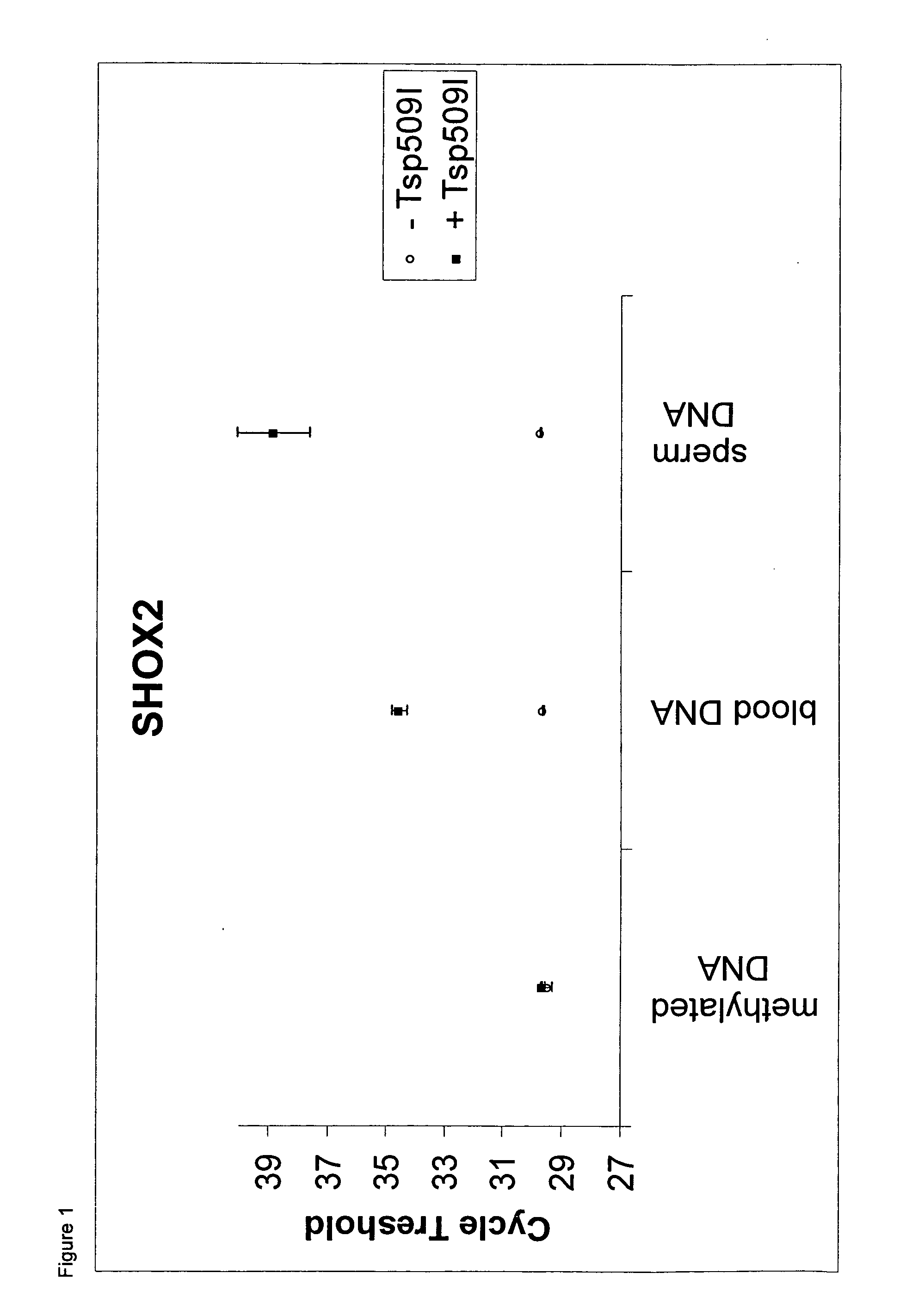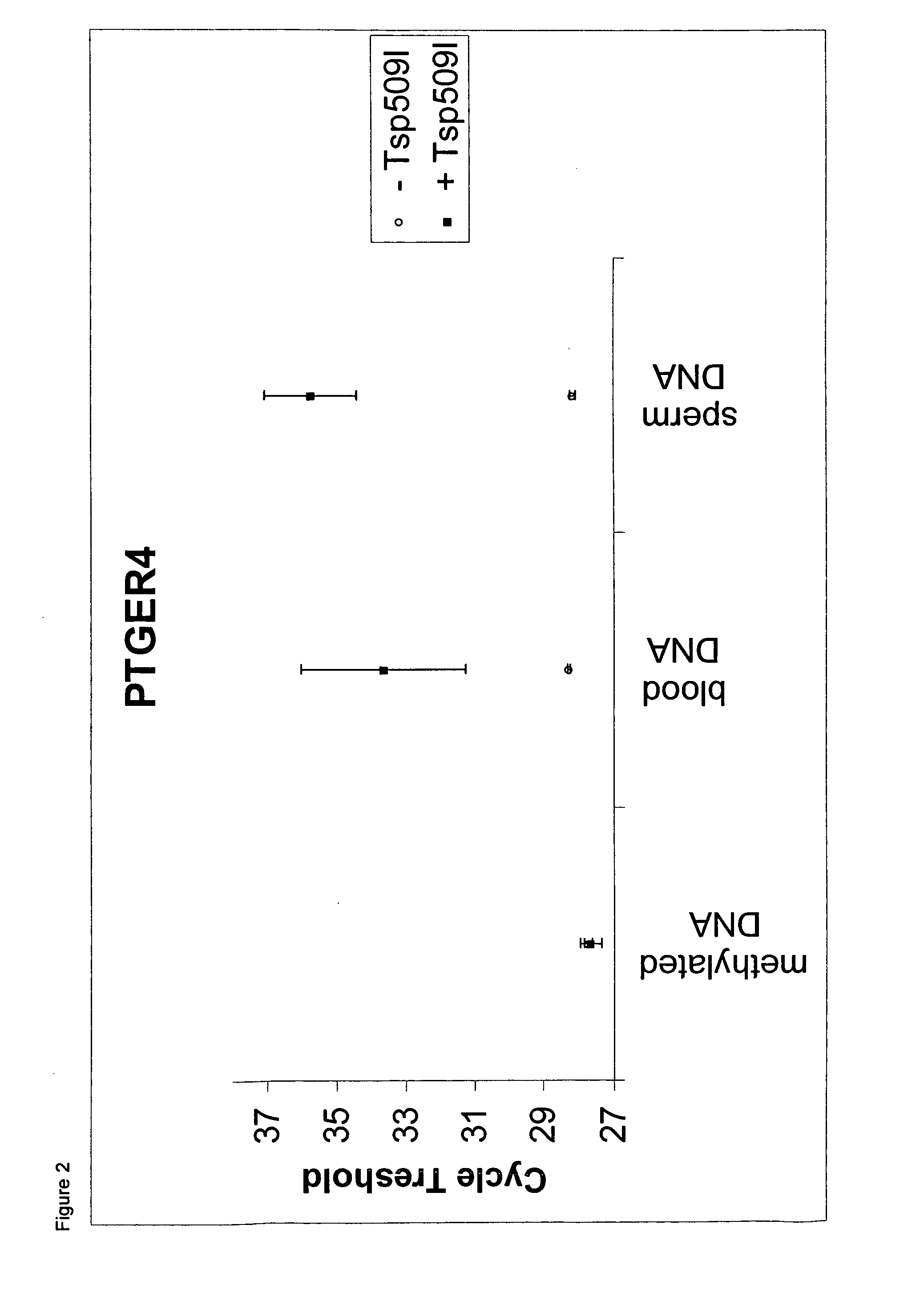Method for methylation-selective amplification
a methylation and methylation specific technology, applied in the field of new methods for methylation specific amplification, can solve the problems of difficult identification of methylation, difficult detection of 5-methylcytosine using particular standard methods, and inapplicability of conventional dna analysis methods based on hybridization, for example, to achieve high sensitivity, high sensitivity, and high sensitivity
- Summary
- Abstract
- Description
- Claims
- Application Information
AI Technical Summary
Benefits of technology
Problems solved by technology
Method used
Image
Examples
example 1
Methylation-Selective Amplification of Regions of SHOX2 and PTGER4
[0142]Experimental setup: Two real time PCR assays were carried out using bisulfite converted DNA derived from sperm, whole blood and artificially methylated DNA as template DNA. The assays are based on the amplification of regions within the SHOX2 and the PTGER4 loci, respectively. Both assays were carried out with and without Tsp509I restriction endonuclease. DNA derived from sperm as well as DNA derived from whole blood are DNAs which show only low level methylation of the two analyzed loci.
[0143]Methods: DNA from washed research sperm (NW Andrology & Cryobank, Inc.) was extracted using the QIAamp DNA Mini Kit (Qiagen) according to the manufacturers' recommendations. Human genomic DNA isolated from whole blood was provided by Promega. Artificially methylated DNA (CpGenome™ Universal Methylated DNA) was supplied by Millipore. All DNAs were bisulfite converted using the EpiTect Kit (Qiagen) according to the handbook....
example 2
Highly Sensitive and Specific Detection of Methylated BARLH2 DNA Using the Heatstable Restriction Enzyme Tsp509I
[0145]Abstract
[0146]DNA methylation is an important epigenetic mechanism involved in fundamental biological processes such as development, imprinting and carcinogenesis. Here, a new technique is presented for the detection of DNA methylation based on real-time PCR of bisulfite treated template with continuous enzymatic digestion of unmethylated DNA during amplification. To determine the analytical performance, the lung cancer methylation biomarker BARHL2 was analysed. The results demonstrate that the approach is useful for highly sensitive and specific detection of single methylated copies in a background of unmethylated DNA.
[0147]Introduction
[0148]DNA methylation plays an important role in regulating cellular differentiation and development. As aberrant DNA methylation of specific loci is also linked to pathologic processes like carcinogenesis, the analysis of methylation...
PUM
| Property | Measurement | Unit |
|---|---|---|
| temperature | aaaaa | aaaaa |
| temperature | aaaaa | aaaaa |
| temperature | aaaaa | aaaaa |
Abstract
Description
Claims
Application Information
 Login to View More
Login to View More - R&D
- Intellectual Property
- Life Sciences
- Materials
- Tech Scout
- Unparalleled Data Quality
- Higher Quality Content
- 60% Fewer Hallucinations
Browse by: Latest US Patents, China's latest patents, Technical Efficacy Thesaurus, Application Domain, Technology Topic, Popular Technical Reports.
© 2025 PatSnap. All rights reserved.Legal|Privacy policy|Modern Slavery Act Transparency Statement|Sitemap|About US| Contact US: help@patsnap.com



